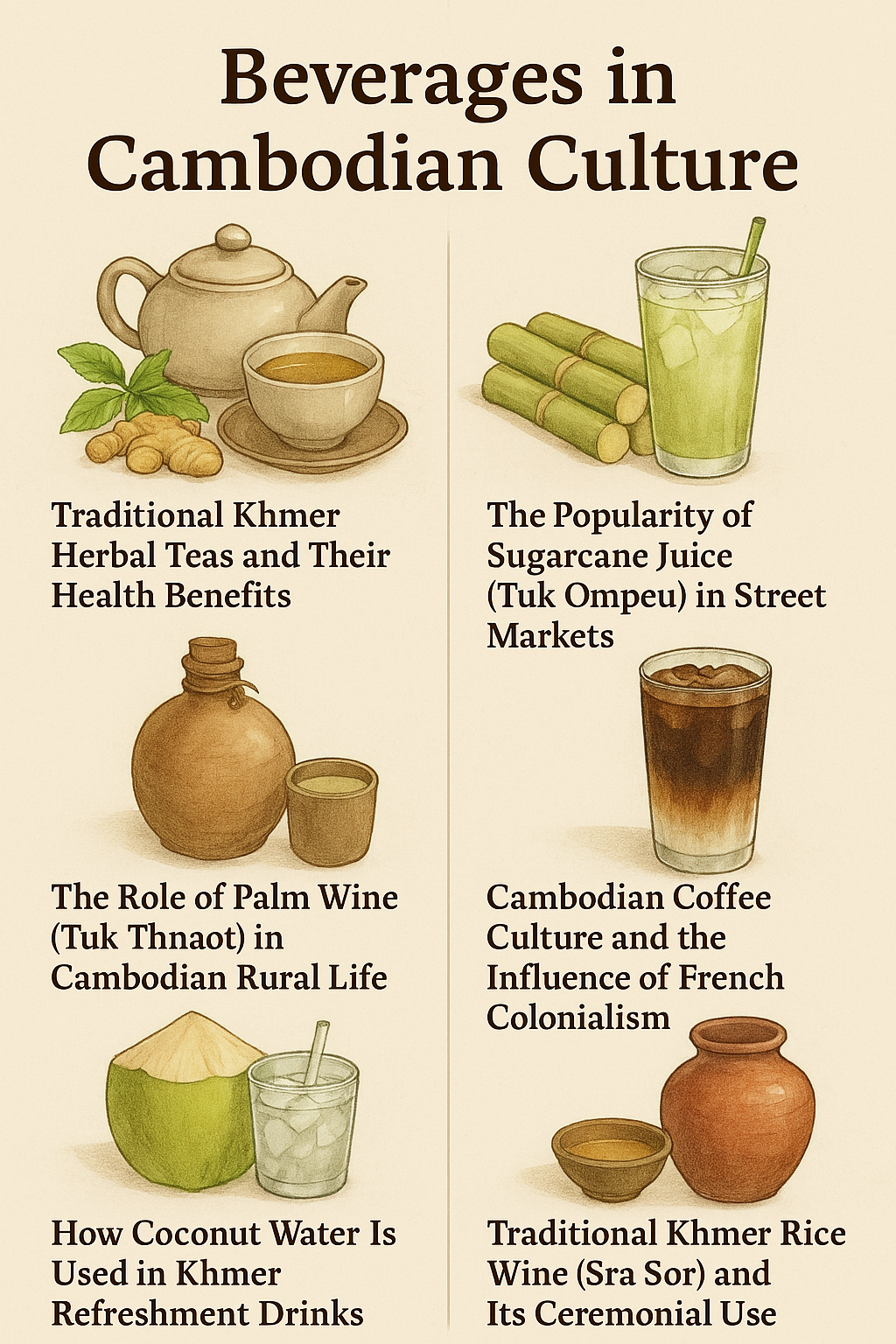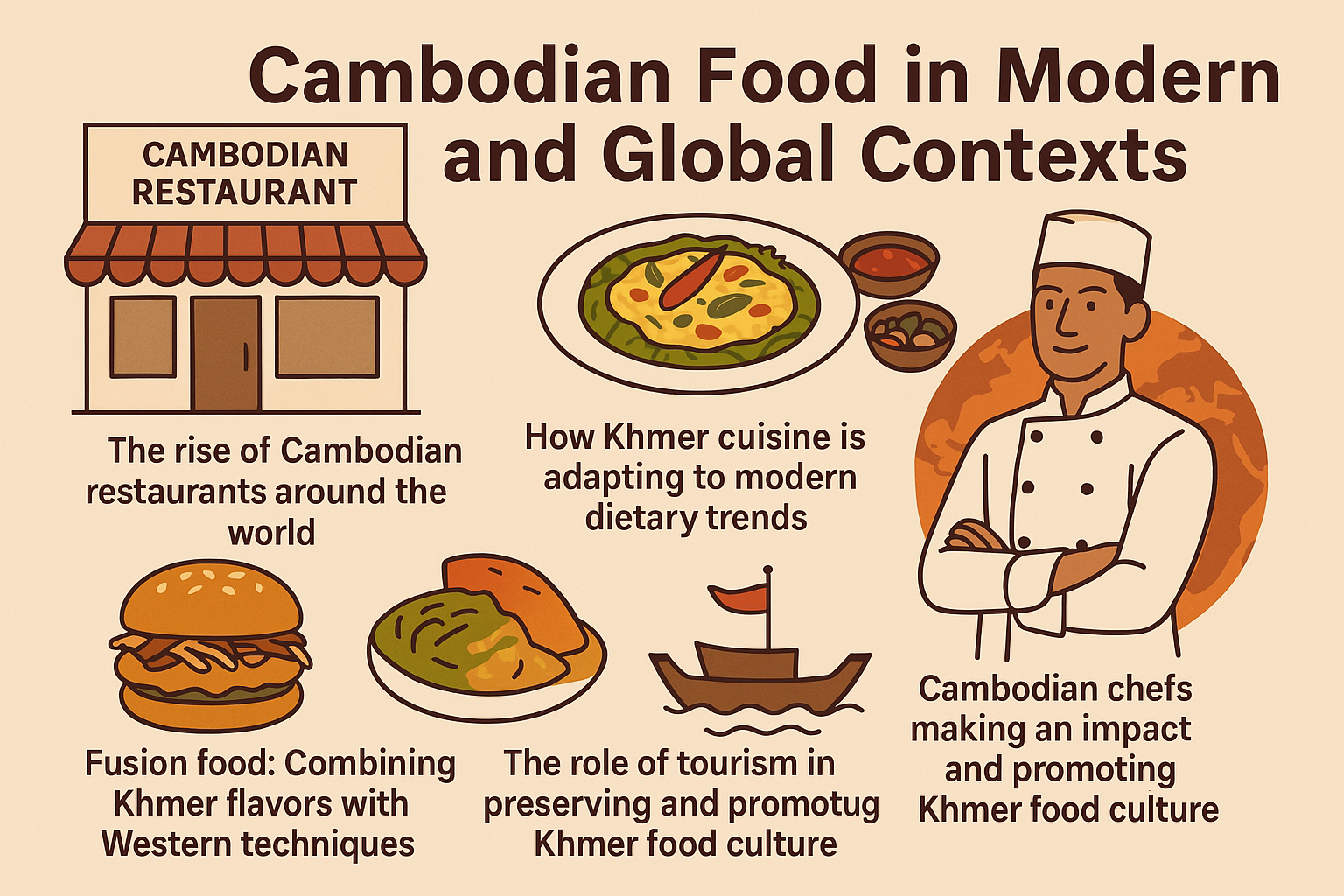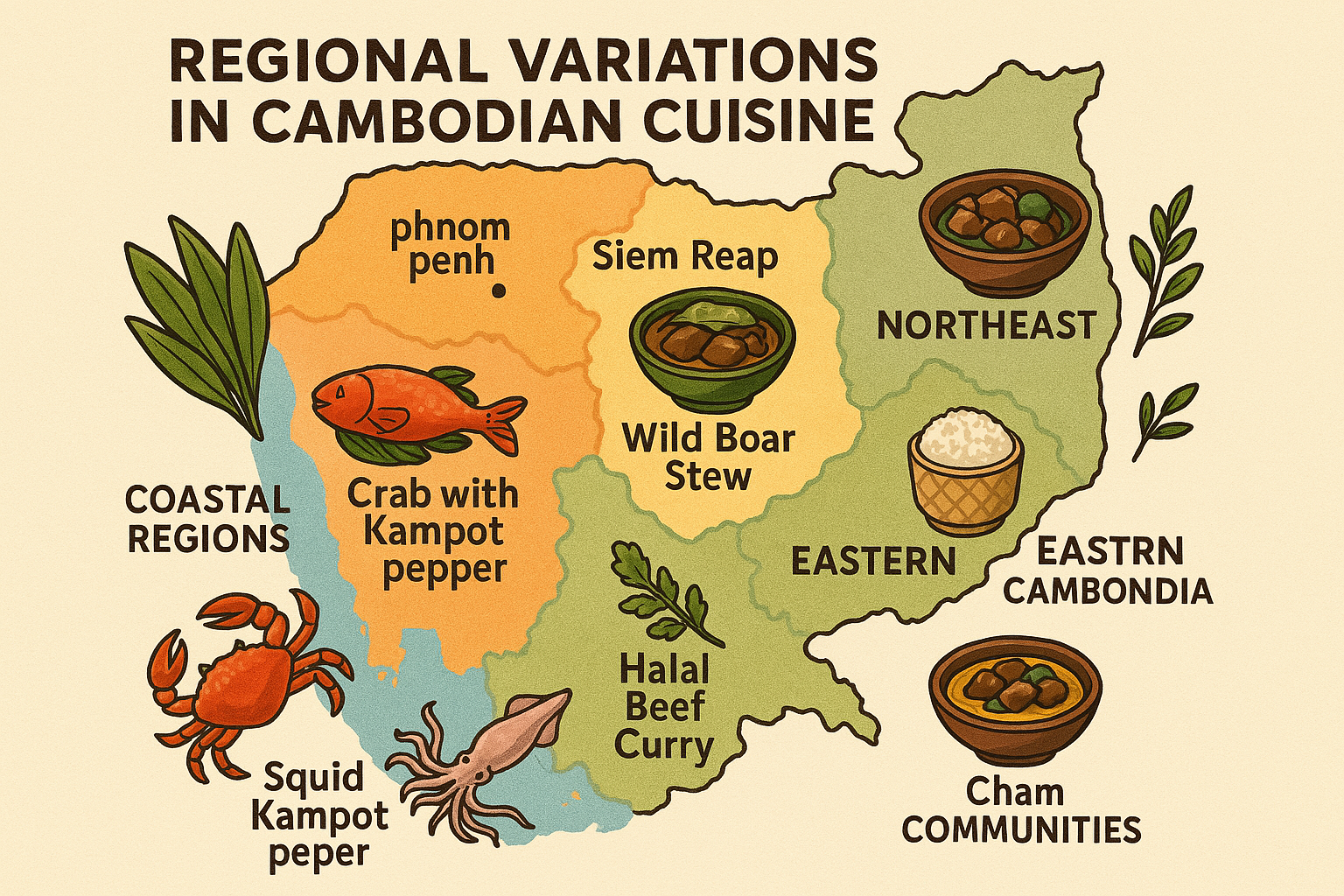Cambodia’s streets come alive every morning and night with sizzling pans, fragrant smoke, and the warm smiles of food vendors serving up some of the most flavorful and culturally rich snacks in Southeast Asia. From the bustling boulevards of Phnom Penh to the sleepy riverfronts of Battambang, Khmer street food is a window into Cambodian life—raw, unfiltered, and delicious.
1. Where to Experience Authentic Khmer Street Food
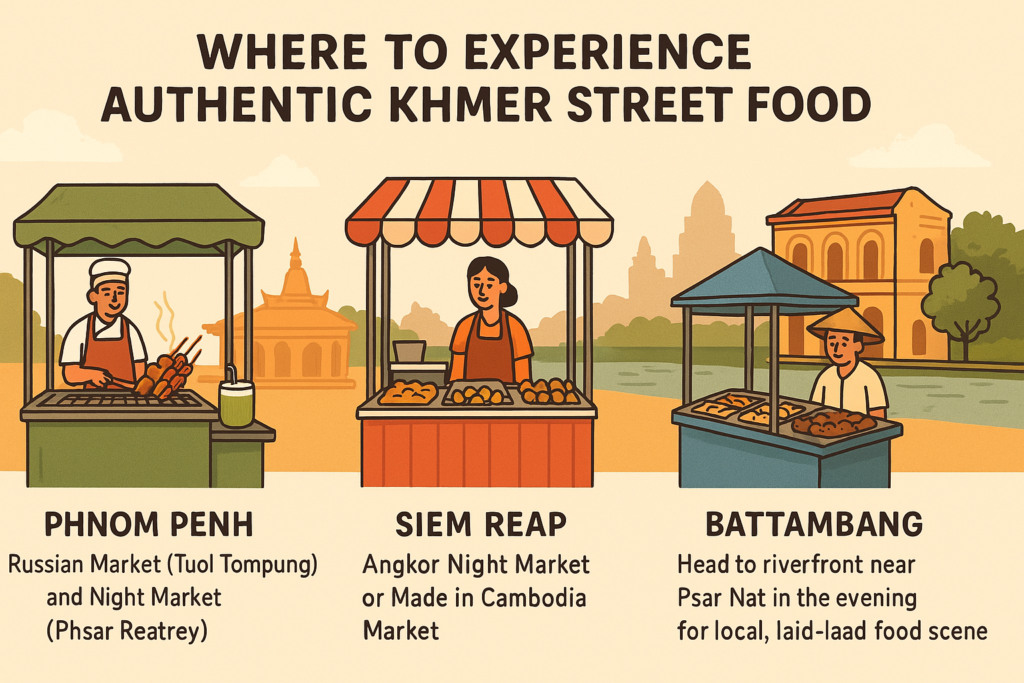
For those seeking the heart of Khmer cuisine, the best experience is found not in fancy restaurants but in the vibrant street stalls and open-air markets. Key places to immerse yourself include:
- Phnom Penh: Visit Russian Market (Tuol Tompoung) for breakfast delights, and Night Market (Phsar Reatrey) for grilled meats and cold sugarcane juice.
- Siem Reap: Explore Angkor Night Market or the Made in Cambodia Market for both local snacks and exotic offerings.
- Battambang: Head to the riverfront near Psar Nat in the evening for a local, laid-back food scene that serves traditional dishes with old-town charm.
2. Popular Cambodian Street Snacks
Street food in Cambodia is affordable, flavorful, and deeply rooted in Khmer traditions. Some favorites include:
- Num Pang – A Cambodian sandwich made with French baguette, pickled vegetables, pâté, grilled meat, and chili sauce.
- Lort Cha – Stir-fried short rice noodles with beef, Chinese broccoli, soy sauce, and topped with a fried egg.
- Ang Dtray-Meuk – Grilled squid brushed with lime juice, chili, and garlic, typically sold on skewers along coastal streets.
- Bai Sach Chrouk – Thinly sliced pork marinated in coconut milk and garlic, grilled and served over rice with pickled vegetables.
These dishes offer a perfect introduction to Khmer flavors—spicy, sweet, sour, and umami-rich.
3. Grilled and Skewered Meats: A Night Market Tradition
Grilling is a national pastime. When the sun sets, smoke rises from makeshift charcoal grills across Cambodia. You’ll find:
- Beef skewers (Sach Ko Ang) marinated in lemongrass and palm sugar
- Chicken wings, hearts, and feet
- Stuffed frog legs, a delicacy seasoned with garlic and herbs
These meats are often served with green mango salad or pickled vegetables, adding crunch and freshness to the rich grilled flavors.
4. The Bold and the Bizarre: Exotic Street Foods
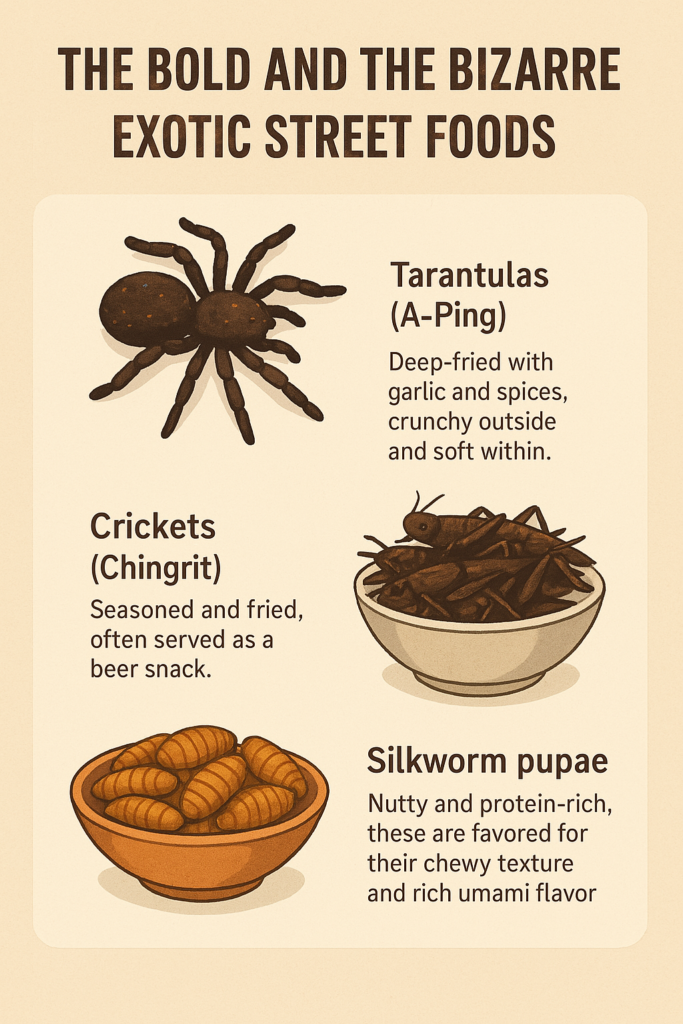
Cambodia is also famous (or infamous) for its exotic offerings. These unique items reflect deep-rooted survival practices and a spirit of culinary adventure:
- Tarantulas (A-Ping): Deep-fried with garlic and spices, crunchy outside and soft within.
- Crickets (Chingrit): Seasoned and fried, often served as a beer snack.
- Silkworm pupae: Nutty and protein-rich, these are favored for their chewy texture and rich umami flavor.
While not for the faint of heart, these foods hold a revered place in Khmer food history—especially in regions where protein was once scarce.
5. Local Markets to Savor Fresh Street Food
Markets are more than shopping destinations—they are the soul of Khmer street cuisine. Top picks include:
- Psar Thmei (Central Market), Phnom Penh – Known for fried noodles, fresh juice, and desserts.
- Old Market (Phsar Chas), Siem Reap – Offers traditional Khmer breakfast items like Nom Banh Chok (rice noodles in fish curry).
- Kampot Night Market – Try Kampot pepper sausages and local sweets.
For the best experience, go early (for breakfast) or after sunset, when street stalls are in full swing.
6. Regional Street Food Differences: Phnom Penh vs. Siem Reap vs. Battambang

Each city puts its own spin on street food:
- Phnom Penh is cosmopolitan, with bold flavors, fusion dishes, and a greater range of meats and spices.
- Siem Reap caters to travelers but retains authenticity—especially in morning markets and outer neighborhoods.
- Battambang is home to classic, slow-cooked dishes, with a strong rural influence and fewer tourist-driven menus.
Even the same dish may taste different across regions—reflecting local produce, cooking traditions, and cultural nuances.

